Letter from Rotterdam
The City and the Sea
By HEATHER TUCKER
Monday, August 15, 2016
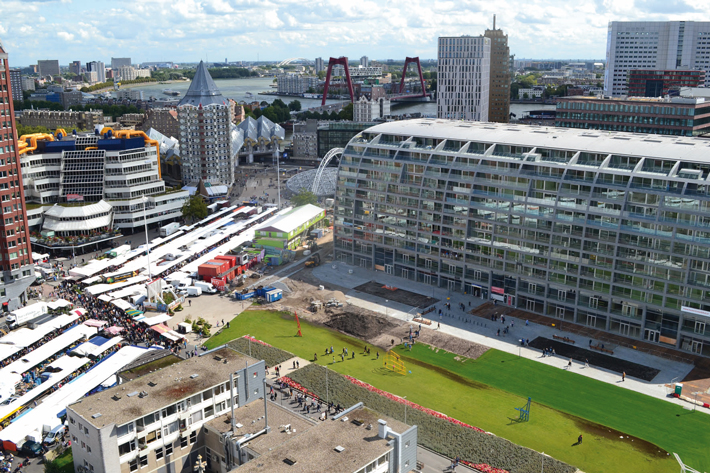
The skyscrapers of Rotterdam rise high above the banks of the Nieuwe Maas, a channel of the Rhine Delta, whose rivers snake their way across most of the southern Netherlands. Lying some 20 miles upstream from the North Sea, the city’s port is a vital trading center that connects the industrial heartland of Europe with the rest of the world. In this forward-looking, modern metropolis, the country’s second largest, almost no two buildings look alike, and its futuristic appearance is a stark contrast to more traditional Dutch cities, such as Amsterdam or Delft. Rotterdam’s Centraal train station, for example, is all angles and sharp lines with a tip that points new arrivals in the direction of the city center. The public library is covered in creeping yellow tubes, while the nearby flying saucer of the Blaak metro station seems poised for takeoff. The city’s newest architectural marvel is the Markthal, a massive covered market hall in the shape of an upended horseshoe that stands near the fifteenth-century St. Lawrence Church. Extensive excavations here have revealed that the hypermodern Markthal lies above what was once the very heart of medieval Rotterdam. “The St. Lawrence Church is the only medieval remnant you can see,” says Arnold Carmiggelt, chief of Rotterdam’s archaeological bureau. “The only other medieval structures are underground.”
The reason so little of medieval Rotterdam survives is that on May 14, 1940, the German Luftwaffe carried out a devastating raid on the city. That attack and the ensuing fire left only a handful of buildings still standing. The redevelopment of Rotterdam and its port after World War II took decades, and while its citizens built for the future, they found themselves constantly encountering their city’s history. “As people were cleaning up, and later when rebuilding, they would find items from the past—tiles, earthenware, medieval and postmedieval artifacts, as well as locks and sluices,” says Carmiggelt. “Because everything had been lost, they were very interested in these objects from the past.” The city’s archaeological bureau, the Netherlands’ first such municipal agency, was founded in 1960 primarily because there were so many accidental historical discoveries.
When construction on the Markthal began in 2009, the bureau was faced with both its biggest opportunity and its toughest challenge. Officials knew the structure’s planned four-level underground garage would destroy any archaeological remains that lay in its way. Excavating ahead of the structure meant digging to a depth of 40 feet, well below sea level. “Constantly seeping groundwater would make archaeological work impossible,” Carmiggelt says, “so we worked with geotechnicans to make a system to keep water out of the excavation.” Working on a tight deadline through winters, in harsh conditions, the team made a series of discoveries that peeled back the history of Rotterdam to the time of the city’s founding and even earlier. The waterlogged earth that made excavation difficult meant that the wooden structures and many artifacts found in garbage layers and cesspits, never exposed to oxygen, were extremely well preserved. They provided remarkably clear evidence of how the earliest generations of Rotterdammers struggled to coexist with the same sea that would eventually enable a small, wet settlement of a handful of farmers to grow into a bustling medieval center, and eventually into one of the world’s most consequential cities, with the largest port in Europe.
Some of the earliest known inhabitants of what became Rotterdam lived during the Roman period, when the southern Netherlands were part of the frontier province of Germania Inferior. They made their homes on marshy peatland near a fort that stood alongside the riverbank of the Old Rhine, the northern border of the Roman Empire. In addition to Roman-era ceramics found at the very bottom of the Markthal excavations, city archaeologists also discovered wooden locks, trenches, and ditches that were all used in attempts to control water levels even then. After the Romans withdrew from the area in the second half of the third century A.D., the population steeply declined, in part because rising sea levels eventually made the region uninhabitable.
Advertisement
Advertisement
IN THIS ISSUE
Features
A New View of the Birthplace of the Olympics
Romans on the Bay of Naples
Worlds Within Us
Letter from Rotterdam
From the Trenches
Piecing Together a Plan of Ancient Rome
Off the Grid
Gimme Middle Paleolithic Shelter
Zapotec Power Rites
Mystery Buildings at Petra
Sun and Moon
The Great Parallelogram
The Prisoners of Richmond Castle
A True Viking Saga
Culture Clash
Lost and Found (Again)
The City That Wasn’t
Mask Metamorphosis
Advertisement

Recent Issues
-
 May/June 2024
May/June 2024
-
 March/April 2024
March/April 2024
-
 January/February 2024
January/February 2024
-
 November/December 2023
November/December 2023
-
 September/October 2023
September/October 2023
-
 July/August 2023
July/August 2023
-
 May/June 2023
May/June 2023
-
 March/April 2023
March/April 2023
-
 January/February 2023
January/February 2023
-
 November/December 2022
November/December 2022
-
 September/October 2022
September/October 2022
-
 July/August 2022
July/August 2022
-
 May/June 2022
May/June 2022
-
 March/April 2022
March/April 2022
-
 January/February 2022
January/February 2022
-
 November/December 2021
November/December 2021
-
 September/October 2021
September/October 2021
-
 July/August 2021
July/August 2021
-
 May/June 2021
May/June 2021
-
 March/April 2021
March/April 2021
-
 January/February 2021
January/February 2021
-
 November/December 2020
November/December 2020
-
 September/October 2020
September/October 2020
-
 July/August 2020
July/August 2020
-
 May/June 2020
May/June 2020
-
 March/April 2020
March/April 2020
-
 January/February 2020
January/February 2020
-
 November/December 2019
November/December 2019
-
 September/October 2019
September/October 2019
-
 July/August 2019
July/August 2019
-
 May/June 2019
May/June 2019
-
 March/April 2019
March/April 2019
-
 January/February 2019
January/February 2019
-
 November/December 2018
November/December 2018
-
 September/October 2018
September/October 2018
-
 July/August 2018
July/August 2018
-
 May/June 2018
May/June 2018
-
 March/April 2018
March/April 2018
-
 January/February 2018
January/February 2018
-
 November/December 2017
November/December 2017
-
 September/October 2017
September/October 2017
-
 July/August 2017
July/August 2017
-
 May/June 2017
May/June 2017
-
 March/April 2017
March/April 2017
-
 January/February 2017
January/February 2017
-
 November/December 2016
November/December 2016
-
 September/October 2016
September/October 2016
-
 July/August 2016
July/August 2016
-
 May/June 2016
May/June 2016
-
 March/April 2016
March/April 2016
-
 January/February 2016
January/February 2016
-
 November/December 2015
November/December 2015
-
 September/October 2015
September/October 2015
-
 July/August 2015
July/August 2015
-
 May/June 2015
May/June 2015
-
 March/April 2015
March/April 2015
-
 January/February 2015
January/February 2015
-
 November/December 2014
November/December 2014
-
 September/October 2014
September/October 2014
-
 July/August 2014
July/August 2014
-
 May/June 2014
May/June 2014
-
 March/April 2014
March/April 2014
-
 January/February 2014
January/February 2014
-
 November/December 2013
November/December 2013
-
 September/October 2013
September/October 2013
-
 July/August 2013
July/August 2013
-
 May/June 2013
May/June 2013
-
 March/April 2013
March/April 2013
-
 January/February 2013
January/February 2013
-
 November/December 2012
November/December 2012
-
 September/October 2012
September/October 2012
-
 July/August 2012
July/August 2012
-
 May/June 2012
May/June 2012
-
 March/April 2012
March/April 2012
-
 January/February 2012
January/February 2012
-
 November/December 2011
November/December 2011
-
 September/October 2011
September/October 2011
-
 July/August 2011
July/August 2011
-
 May/June 2011
May/June 2011
-
 March/April 2011
March/April 2011
-
 January/February 2011
January/February 2011
Advertisement





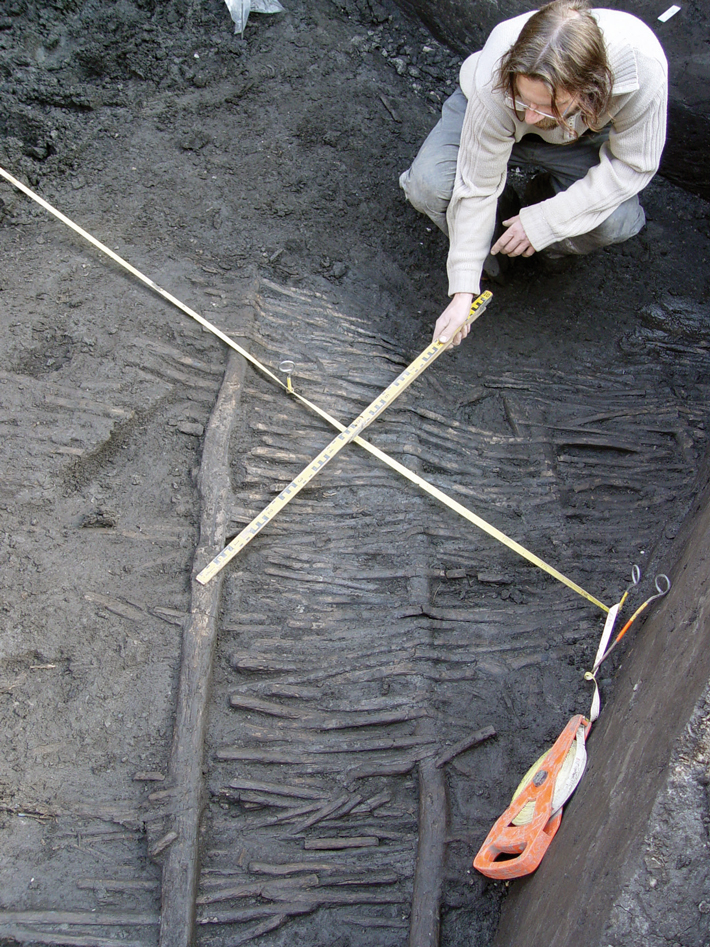 It wasn’t until A.D. 900 that the first pioneering farmers returned to the riverbanks of what was by then known as the Rotte (meaning “muddy water”) River. A farmstead is first mentioned in a charter dating to 1028, which describes a church of Rotta (a Latinization of “Rotte”) that belonged to Hohorst Monastery, which in turn was part of the vast Germanic Holy Roman Empire. To the surprise of the city archaeologists, they found extensive remains dating to this period during the Markthal excavations. At a depth of some 33 feet they encountered a well-preserved terp, or a raised earthen mound, on which they found the remains of six distinct farmsteads dating from 950 to 1050.
It wasn’t until A.D. 900 that the first pioneering farmers returned to the riverbanks of what was by then known as the Rotte (meaning “muddy water”) River. A farmstead is first mentioned in a charter dating to 1028, which describes a church of Rotta (a Latinization of “Rotte”) that belonged to Hohorst Monastery, which in turn was part of the vast Germanic Holy Roman Empire. To the surprise of the city archaeologists, they found extensive remains dating to this period during the Markthal excavations. At a depth of some 33 feet they encountered a well-preserved terp, or a raised earthen mound, on which they found the remains of six distinct farmsteads dating from 950 to 1050.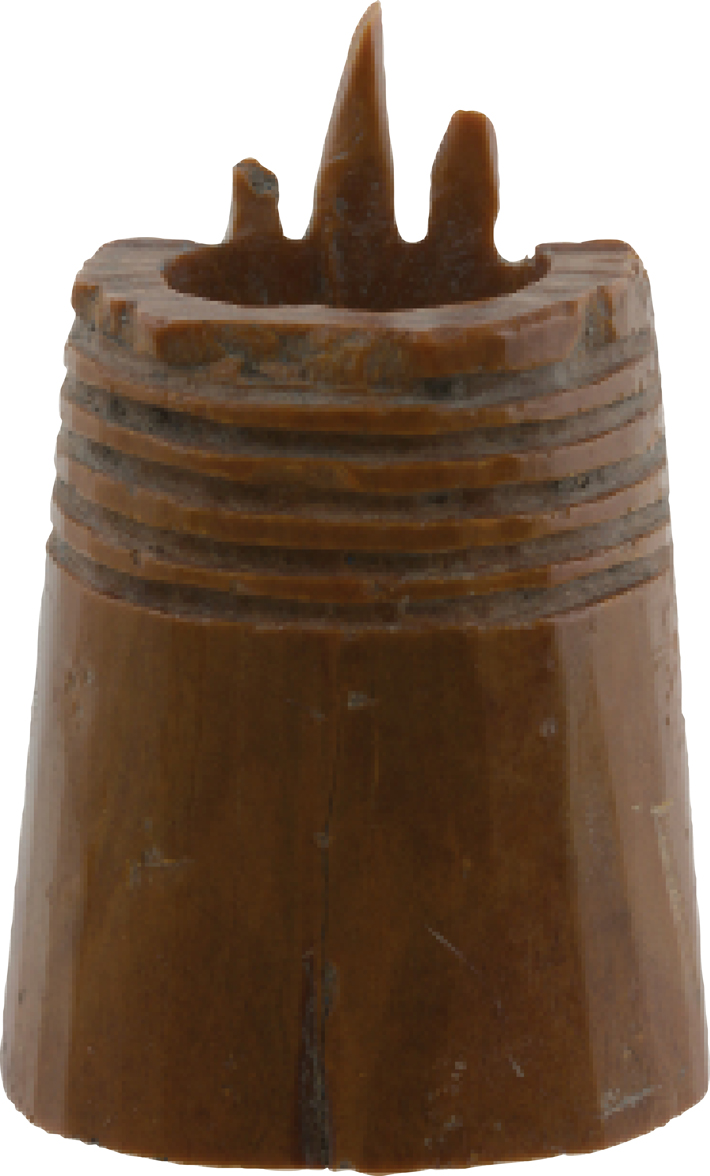 While they may have enjoyed some success in farming and raising livestock, life for the residents of the humble Rotta village was difficult. Despite building their farms on the elevated banks of the river, the villagers were constantly threatened by flooding. The farmers tried to combat the rising water by draining the peat via small man-made canals, which are still visible in the archaeological record. But because peat settles much more than other soil types, when the land was drained, it lowered in elevation. In an area already prone to flooding, this only made the problem worse. “Their very way of life made it impossible to live there,” says van den Dries. Unable to overcome the wet conditions and frequent flooding, the Rotta villagers were forced to abandon their homes around 1050.
While they may have enjoyed some success in farming and raising livestock, life for the residents of the humble Rotta village was difficult. Despite building their farms on the elevated banks of the river, the villagers were constantly threatened by flooding. The farmers tried to combat the rising water by draining the peat via small man-made canals, which are still visible in the archaeological record. But because peat settles much more than other soil types, when the land was drained, it lowered in elevation. In an area already prone to flooding, this only made the problem worse. “Their very way of life made it impossible to live there,” says van den Dries. Unable to overcome the wet conditions and frequent flooding, the Rotta villagers were forced to abandon their homes around 1050.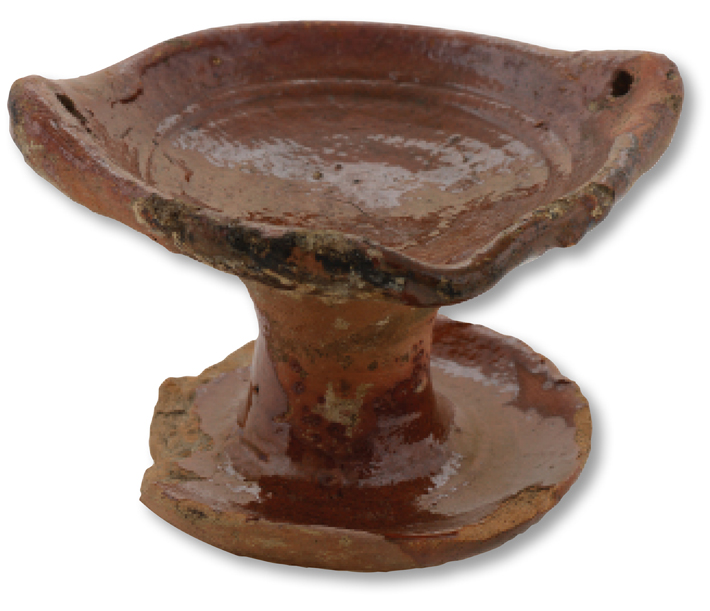 The excavations offered a remarkable picture of the evolution of houses built in the Westnieuwland polder. In the earlier levels, city archaeologists found the remains of wood houses roofed with thatch and fireplaces located in the center of the houses, while in the fifteenth-century sections of the site it is evident that houses were being built out of stone. Rotterdammers were becoming more prosperous and strove to meet city regulations that attempted to prevent large fires. This shift in construction materials also touched off a change in the kind of modest household items that were found in houses. For example, oil lamps unearthed at the site had two holes before the fifteenth century. A fire hazard if placed too near the wooden walls, the lamps were suspended from the ceiling by a cord strung through the two holes. Once stone came into use, lamps could be safely hung on walls, and only one hole was needed to secure them. Another testament to Rotterdamers’ preoccupation with fire is numerous examples of flat unglazed earthenware objects—medieval fire extinguishers—used to prevent embers from rekindling. By 1500, the threat of fire had been reduced to such a degree that houses were being built close together.
The excavations offered a remarkable picture of the evolution of houses built in the Westnieuwland polder. In the earlier levels, city archaeologists found the remains of wood houses roofed with thatch and fireplaces located in the center of the houses, while in the fifteenth-century sections of the site it is evident that houses were being built out of stone. Rotterdammers were becoming more prosperous and strove to meet city regulations that attempted to prevent large fires. This shift in construction materials also touched off a change in the kind of modest household items that were found in houses. For example, oil lamps unearthed at the site had two holes before the fifteenth century. A fire hazard if placed too near the wooden walls, the lamps were suspended from the ceiling by a cord strung through the two holes. Once stone came into use, lamps could be safely hung on walls, and only one hole was needed to secure them. Another testament to Rotterdamers’ preoccupation with fire is numerous examples of flat unglazed earthenware objects—medieval fire extinguishers—used to prevent embers from rekindling. By 1500, the threat of fire had been reduced to such a degree that houses were being built close together.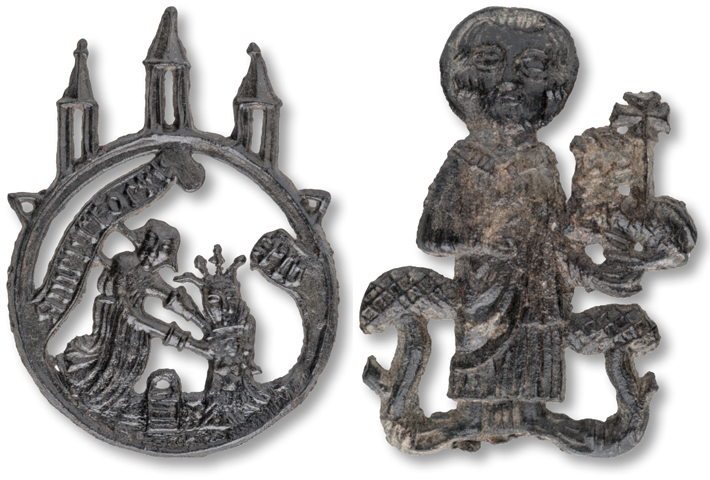
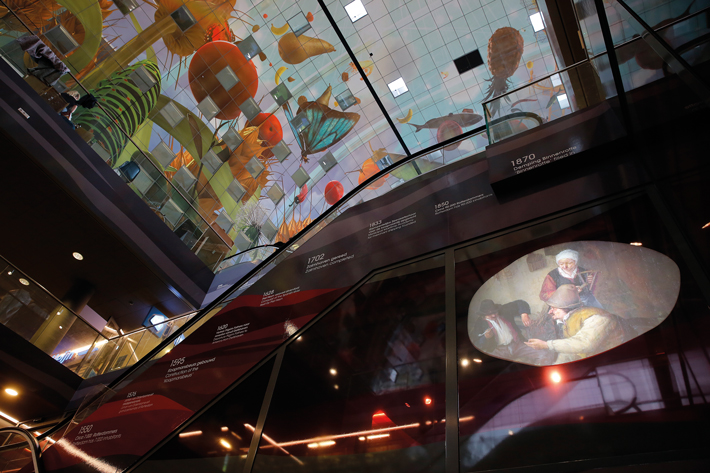
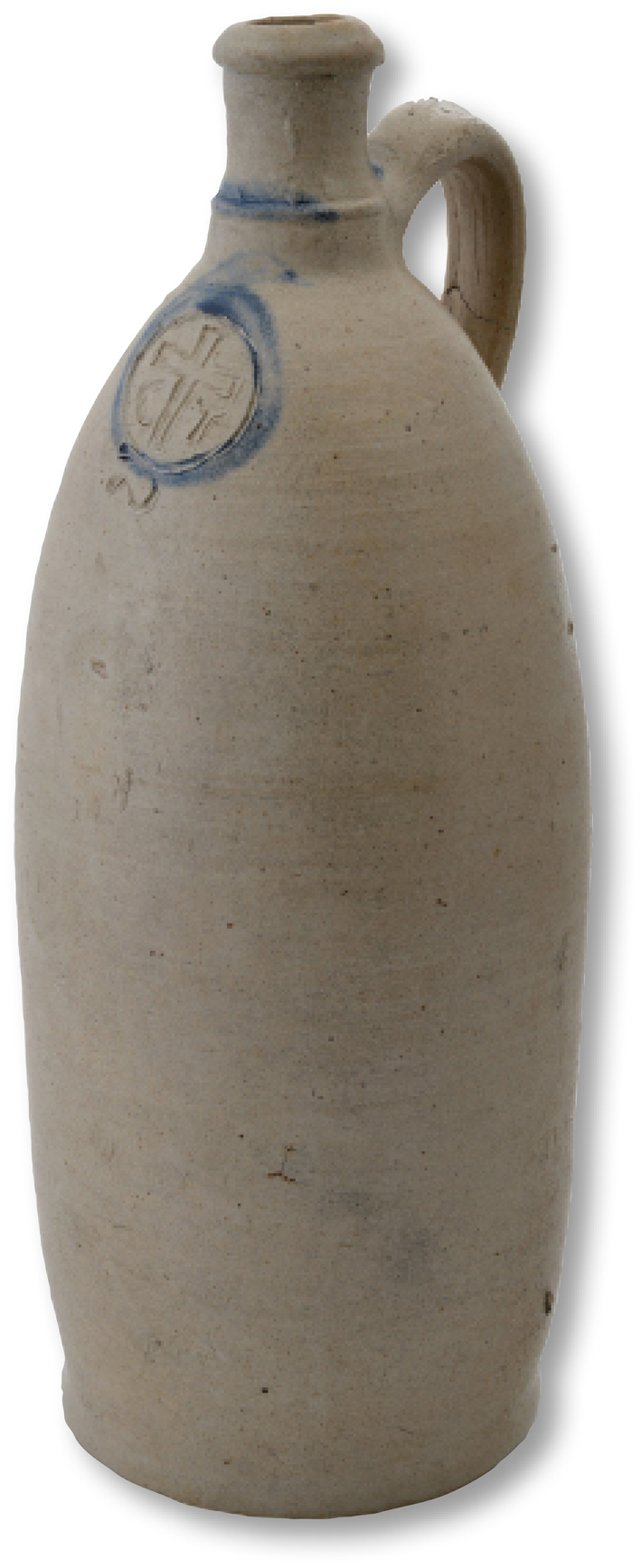 Few artifacts or structures in the Markthal excavations that date to after the seventeenth century were discovered. But by that time, the historical record amply shows that the city was well on its way to becoming one of the most vital harbors in the world. Today the Port of Rotterdam stretches more than 25 miles in length and covers 41 square miles. Each year, some 30,000 seagoing vessels and 110,000 inland vessels sail in and out of Rotterdam, which handles some 465 million tons in cargo, making it by far Europe’s busiest port.
Few artifacts or structures in the Markthal excavations that date to after the seventeenth century were discovered. But by that time, the historical record amply shows that the city was well on its way to becoming one of the most vital harbors in the world. Today the Port of Rotterdam stretches more than 25 miles in length and covers 41 square miles. Each year, some 30,000 seagoing vessels and 110,000 inland vessels sail in and out of Rotterdam, which handles some 465 million tons in cargo, making it by far Europe’s busiest port.
